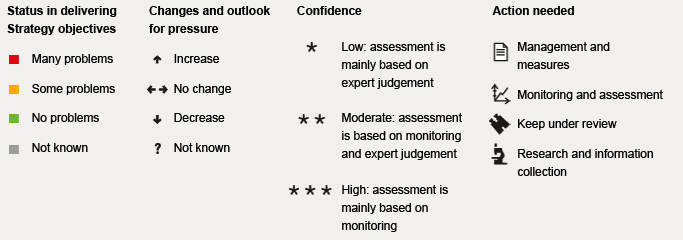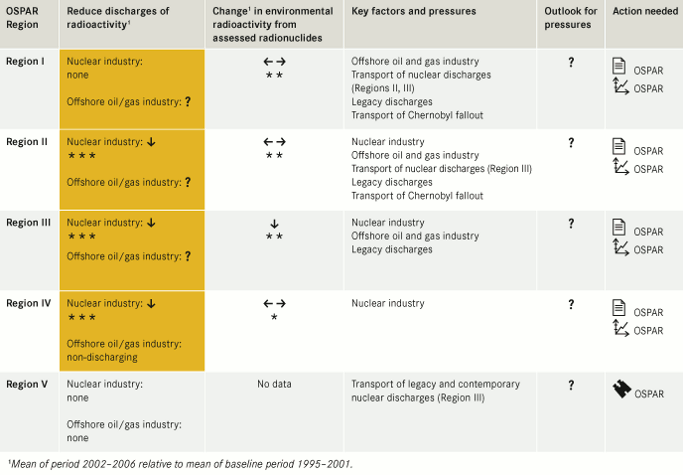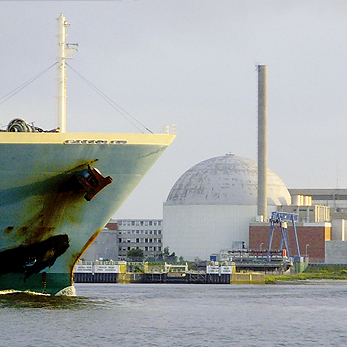
What happens next?
Progress made for the nuclear sector but efforts must continue
To date, progress on reducing discharges of radioactive substances has focused on the nuclear sector. This sector accounts for the main inputs to the marine environment of β-emitting radionuclides in the OSPAR area, mostly in Regions II and III. For some radionuclides such as tritium, reduction technologies at an industrial scale are not currently available. OSPAR countries have reduced discharges of specific radioactive substances from the nuclear sector, reported the application of BAT, and determined doses to humans and marine biota. National reporting provides the following evidence:
- Total β-activity discharges (excluding tritium) from the nuclear sector, in particular discharges of 99Tc, have fallen and related concentrations in seawater and biota have decreased in a number of monitoring areas.
- The effect of discharges and concentrations of radioactive substances from the nuclear sector on the overall quality status of the OSPAR area and doses and impacts on humans and biota are considered low.
- In Regions I and II, elevated concentrations of certain radionuclides are mainly due to the transport of these radionuclides by ocean currents.
However, there are currently too few data to show conclusively whether the objective of the Radioactive Substances Strategy for 2020 will be met. Abatement at source is still important, based on the precautionary approach and the principle of prevention, and BAT must continue to be applied and developed to minimise the impact of radioactive discharges.
Progress on the non-nuclear sector cannot yet be assessed
Best estimates suggest that a substantial contribution to the releases of radioactive substances in the OSPAR area is made by the naturally occurring radionuclides discharged with produced water from the offshore oil and gas industry, which is concentrated in Regions II, III and the Norwegian Sea (Region I). Additional discharges from offshore installations result from descaling operations. Inputs to the sea of radioactive substances from medical uses are minor compared to those from the nuclear sector and the offshore oil and gas industry. Collection of data for the non-nuclear sector and the associated indicator radionuclides only began in 2005, so the time series available are too short to assess trends in discharges, concentrations and doses in the marine environment. OSPAR should endeavour to assess the contribution of the non-nuclear sector to the pollution of the OSPAR area by radioactive substances and to identify appropriate management measures for implementation by OSPAR countries.
Evidence base and assessment tools must improve
OSPAR should improve the evidence base and assessment tools for evaluating progress towards the OSPAR objectives for all indicator radionuclides from the nuclear and non-nuclear sectors. OSPAR should achieve this by the following:
- Continue to collect systematically data on discharges and concentrations of the indicator radionuclides.
- Further develop tools to estimate and assess doses to evaluate impacts of discharges on the environment.
- Further develop statistical trend analysis techniques, taking advantage of experience gained in other contexts.
- Develop environmental quality criteria for the protection of the marine environment against adverse effects of radioactive substances.
Delivering OSPAR Strategy objectives for radioactive substances


